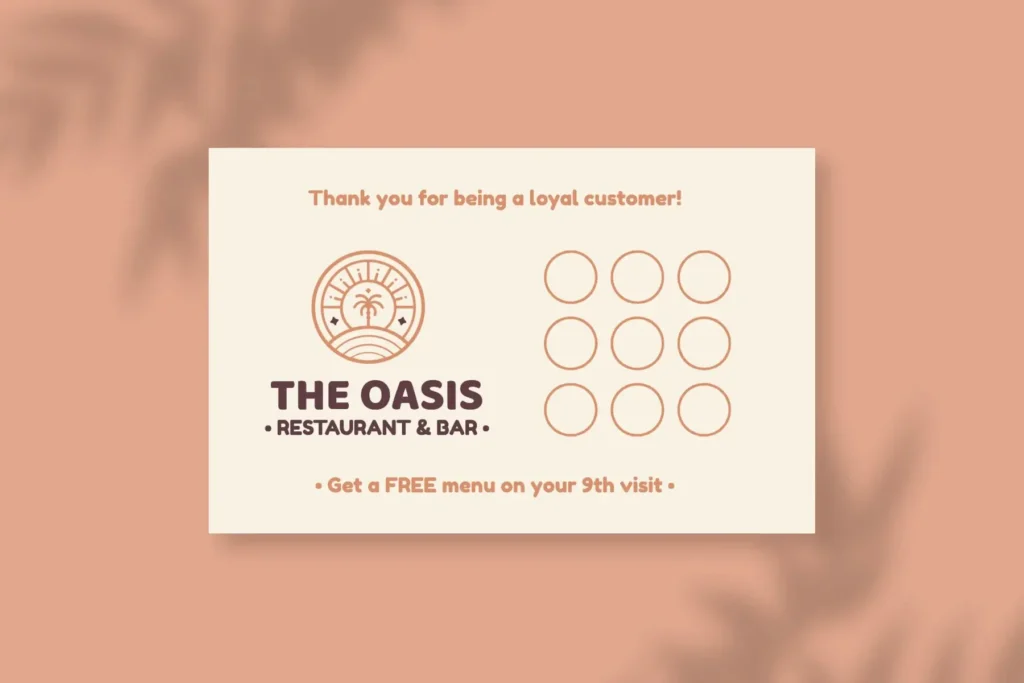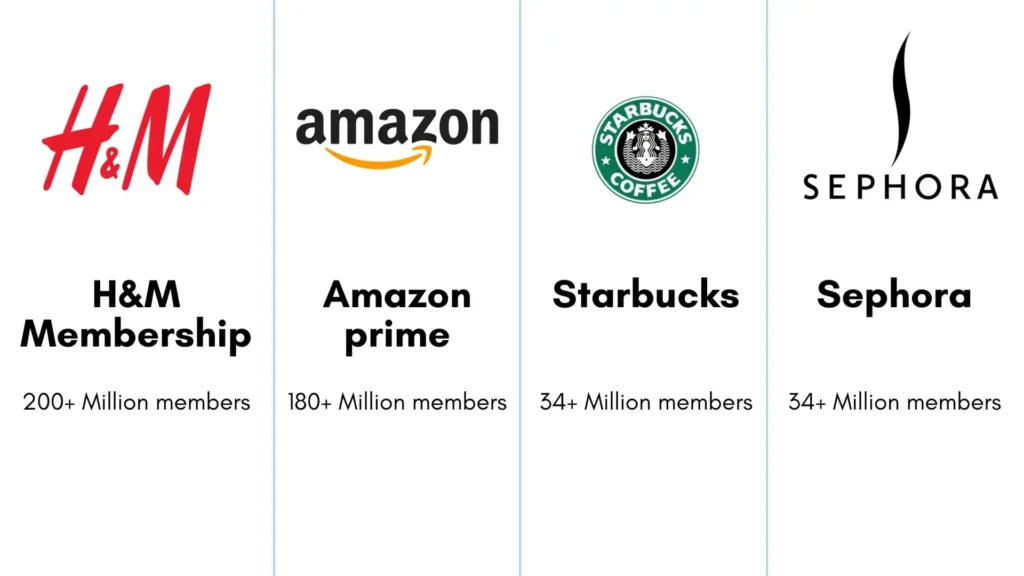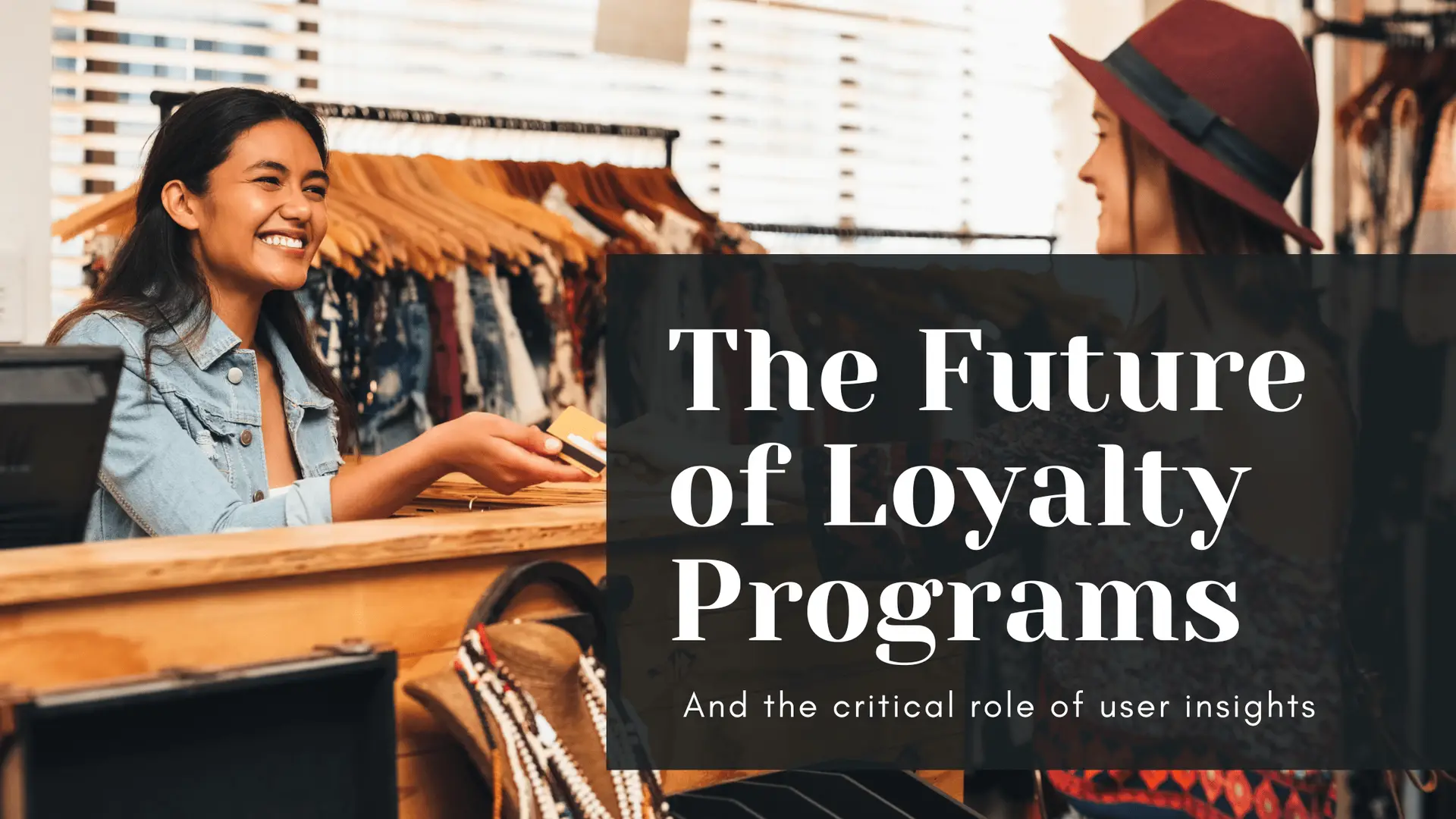In today’s highly competitive market, customer engagement is the lifeblood of successful organizations. You don’t just want to be known by customers, you want customers to return and ideally to help you grow your audience through referrals.
One way of increasing customer engagement and return visitors are loyalty programs. But what if your loyalty program sees a low customer engagement?
Let me walk you through a project example and the steps we took to increase engagement.

📈 Let’s look at some data about loyalty programs
Customer rewards programs have been around for more than a decade and are still used quite often as a strategy to increase customer engagement. This strategy is also fuelled by studies which have shown that the cost of acquiring new customers are in average five times higher than the cost of retaining existing customers.
It seems like a loyalty program is an easy and straightforward solution for growth: it can be both an attractor to win NEW customers and it helps to retain EXISTING customers.
Here are som statistics about loyalty programs:
- An average US household is enrolled in 18 loyalty programs
- 57% of consumers spend more on brands to which they are loyal (Accenture)
- Over 83% of consumers say belonging to a loyalty program influences their decision to buy again from a brand. (Yotpo)
- 84% of consumers say they’re more likely to stick with a brand that offers a loyalty program. (Businesswire)
- Statista predicts that the global loyalty management ecosystem will be worth $24 billion by the end of 2029



Some of the largest loyalty programs are (based on Omnisend):
- H&M Membership (200+ Million members)
- Amazon Prime (180+ million members)
- Starbucks (34+ million members)
- Sephora (34+ million members)

From a business perspective, it seems like a no brainer: who wouldn’t want to have a loyalty program?
🚧 The challenge with loyalty programs
The reality, of course, is not that simple.
First, you need to choose your strategy: do you want offer rewards points-based, subscription-based, spend-based, tier-based…?
Then you need to launch and market your loyalty program. Selling your program might seem like an easy task – who wouldn’t want to get “rewarded” – but it actually isn’t:
- High competition: Consumers are being bombarded with rewards program
- Accenture reported that “more than 90 percent of companies currently employ some form of customer engagement or loyalty program.”
- Changing behaviour: Consumers are basing loyalty more on values than on rewards
- Millenials (a segment of 1.8 billion globally) have a negative reaction to loyalty programs
- 90% of Gen Zs base their brand loyalty more on shared values (Yotpo)
In addition, loyalty costs more than many business leaders realize. Once activated, they are difficult to shut down.
The truth is that traditional loyalty programs are costing significantly more, and delivering significantly less, than many executives realize. To reclaim the loyalty value that is slipping through their fingers, business leaders are starting to rethink what loyalty means for their customers—and for their business. (Accenture)
So…
🌟 What makes a loyalty program successful?
The idea of a loyalty program is not enough (anymore).
Just because you start a loyalty program, doesn’t mean that your customers will use it.
Your program needs to connect with your customers and their expectations. Here are some important factors to make a loyalty program successful:
Type of rewards
Many programs offer chances to earn a prize, like a product or points that can be used toward a product. But there are only so many kitchen tools one can use, so the transactional relationship is not always the most attractive.
Research shows that 57% of consumers sign up for programs to save money (cash-back or other money savers).
Good examples:
- Cash-back credits cards (like Tangerine)
- PC Optimum (with 19 million members one of Canada’s largest loyalty programs)
Customer experience
Monetary rewards have an impact – but at least as important is the customer service. Consumers want to have an emotional connection and feel valued. Based on a Forrester report, the top five reasons for feeling connected to a brand are:
- Cares about me
- Cares about the worl
- Understands me
- Has an audience of people like me (my tribe)
- Makes me feel special
Good examples:
- Worn Wear program from Patagonia
Ease of use
A rewards program needs to easy to use and accessible during the customer journey. If users need to carry extra cards, entering a password anytime they use a loyalty app or recall all the different partner brands they could use a loyalty card for, it causes friction.
You want to make it as easy as possible – for example by sending reminders, by providing a mobile app or a personal account where you can access your rewards status. Adding an element of gamification can create an extra level of customer delight.
Good examples:
- Starbucks (app with reminders & collecting stars/ gamification)
- Beauty Insider by Sephora
Personalization
With the rising amount of rewards programs comes a “rewards fatigue”. Consumers are being bombarded with marketing messages and promotions. They don’t want to feel treated like a random customer, but like a unique individual.
A majority of loyalty programme members (78%) are unsatisfied with the current level of personalization of their programmes.
Personalization starts with communication (by addressing each customer with their personal name) and makes use of consumer data to driver personalized recommendations.
Good examples:
👆How to overcome low engagement: a customer-centric approach
One of my recent clients struggled with their customer engagement for their rewards program.
As an insurance organization, they offered a partnership-based loyalty program: customers could get points or reduced prices when shopping with selected brands. The reward program could be accessed with a mobile app, but the engagement was very low.
The immediate assumption was: we need to redesign the app. It’s probably too complicated.
And that might be true – but if you want to change your consumer’s behaviour, it often requires more than updating the design of a digital interface.
Designing for behaviour change requires customer understanding
You can look at data and analyze the usage of your mobile app – but this step alone won’t tell you WHY the usage is low.
A better approach for making improvements requires a mixed-method research approach.
Step 1: Review existing data & customer knowledge

- Start with reviewing your analytics to understand the current user behaviour
- Create assumptions to interpret these data
- Define your knowledge gaps (using tools like an assumption map)
Step 2: Identifying Customer Needs and Pain Points

The best way to understand customers’ motivations, barriers, pain points and expectations is through interviews and observations. Especially with loyalty programs, you want to understand the context your customers are in and that might entail friction points.
- “I don’t remember the related brands I can use the rewards program for.”
- “Every time I open their app it asks me to sign in – but I don’t use it often enough to remember my password.”
- “I don’t know what to do with these points, so I don’t bother.”
Step 3: Summarize findings and create insights

Some of your customers’ feedback might confirm your assumptions – but I promise you that you will always have surprises and learn something new.
You will not only get feedback on customer behaviour (Example: customers find the app difficult to navigate) but also about their attitude (Example: Customers don’t see the value in the rewards offered).
Step 4: Connecting with Customers’ Day-to-Day Routines

An important aspect of the research phase is not to solely focus on a single touchpoint. You don’t want to a simple usability test of your mobile app and collect feedback on missing features or complexity in the usage. You want to also understand the overall “customer journey”:
- When would a customer benefit from your rewards program? What context are they in?
- What triggers them to use/ remember your rewards program?
- What is their main end goal?
- How would the rewards program be beneficial?
- What steps does a customer need to take to use & interact with your rewards program?
- How do they know if it was successful?
- How and when will they find out about their rewards?
- How and when will they use the rewards
Creating a customer journey will help you to understand where the biggest barriers are currently for your consumers and what affects a low engagement.
Step 5: Designing with the Customer in Mind

By now you will have a better understanding of what causes a low engagement. You might have gotten confirmation that your mobile app is difficult to use – but you will have a way more detailed understanding of what your consumers struggle with. And there might be smaller, easier steps you could do first to experiment with behaviour change.
- Sending a regular newsletter with special promotion form some of your partner brands
- Allowing users to set their top 5 favorites brand – and then send personalized reminders for these brands.
- Integrating your rewards program with your partnered online stores
Step 6: Measuring Success and Iterating

Any change you make, you want to track and measure. Don’t just look at the quantitative data, but keep checking in with your customers and get their feedback. This could be with a quick one or two question mini-survey.
🛍️ Take away
The main message I want you to take away is: you don’t always need to start big.
It is so easy for us to focus on solutions; we are wired to find bandages and jump on quick explanations, anything that helps us to feel better. But just because we can envision a solution (a really nice and modern designed mobile app) doesn’t mean we understand the problem or are even solving the (right) problem (I don’t know what partner brands I can use this reward program for).
When taking the time to understand the real customer needs and behaviour, we often come up with way simpler and smaller steps that can have a big impact before starting a costly and lengthy redesign project.
